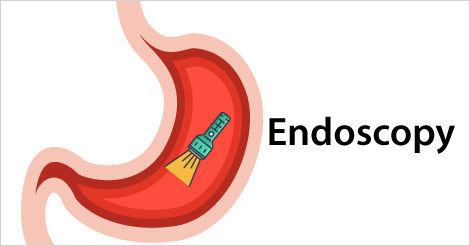Gastrointetinal Cancer Diagnosis and Treatment
Diagnosis
- A tiny camera to see inside your stomach (upper endoscopy). A thin tube containing a tiny camera is passed down your throat and into your stomach. using it to look for signs of cancer.
- Removing a sample of tissue for testing (biopsy). If any suspicious areas are found during the upper endoscopy, special tools can be used to remove a sample of tissue for testing. The sample is sent to a lab for analysis.
- Imaging tests. Imaging tests used to look for stomach cancer include CT scans and a special type of X-ray exam called a barium swallow.

Treatment
Treatment options for stomach cancer depend on the cancer’s location, stage and aggressiveness.
Surgery
The goal of surgery is to remove all of the cancer and some of the healthy tissue around it.
Operations used for stomach cancer include:
- Removing early-stage tumors from the stomach lining. Very small cancers limited to the inside lining of the stomach may be removed by passing special tools through an endoscope. Procedures to cut away cancer from the inside lining of the stomach include endoscopic mucosal resection and endoscopic submucosal resection.
- Removing part of the stomach (subtotal gastrectomy). During subtotal gastrectomy, the surgeon removes the part of the stomach affected by cancer and some of the healthy tissue around it. This operation may be an option if your stomach cancer is located in the part of the stomach nearest the small intestine.
- Removing the entire stomach (total gastrectomy). Total gastrectomy involves removing the entire stomach and some surrounding tissue. The esophagus is then connected directly to the small intestine to allow food to move through your digestive system. Total gastrectomy is used most often for stomach cancers that affect the body of the stomach and those that are located in the gastroesophageal junction.
- Removing lymph nodes to look for cancer. The surgeon may remove lymph nodes in your abdomen to test them for cancer.
- Surgery to relieve signs and symptoms. An operation to remove part of the stomach may relieve signs and symptoms of a growing cancer in people with advanced stomach cancer.
Chemotherapy
Chemotherapy is a drug treatment that uses chemicals to kill cancer cells. Chemotherapy drugs travel throughout your body, killing cancer cells that may have spread beyond the stomach.
Chemotherapy can be given before surgery to help shrink the cancer so that it can be more easily removed. Chemotherapy is also used after surgery to kill any cancer cells that might remain in the body. Chemotherapy is often combined with radiation therapy.
Chemotherapy may be used alone or with targeted drug therapy in people with advanced stomach cancer.

